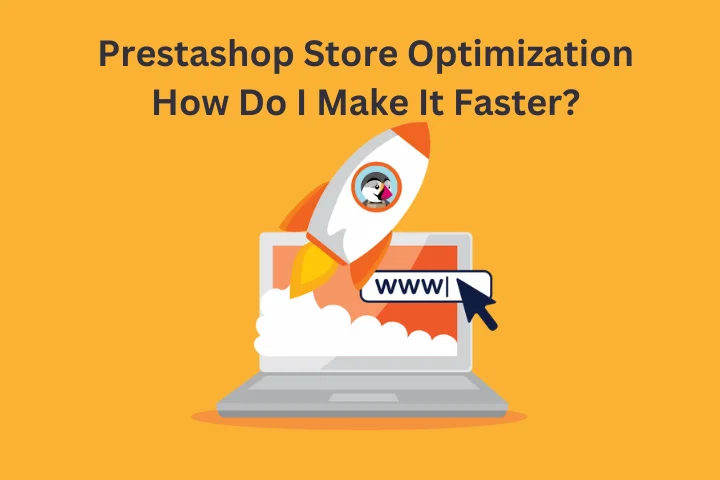1. Introduction
You can’t afford to overlook your website’s performance because it impacts critical shop operations. The speed of your website influences whether customers remain or leave. Businesses use online mediums to reach an audience that is bigger and more varied. Many digital platforms enable brands to leverage their reach and develop an online store.
Prestashop is a fantastic platform that allows businesses to construct an online store to sell their goods and services. It provides a variety of tools and themes for customizing the user interface in favor of your business. Thus, in this blog, we will explore the ways for Prestashop speed optimization. Furthermore, we will provide the finest Prestashop performance optimization tool to make the work easier.
2. Techniques To Improve Prestashop Store Speed
Here, are the ways to optimize the speed of your Prestashop website.
Modules that are no longer in use should be removed
Delete unneeded modules as one solution to slow PrestaShop. In general, PrestaShop 1.7 appears to provide modules and functionalities you probably do not require. Uninstall and remove all modules that are no longer in use. As a result, these components will not be full, and your PrestaShop store will not be slowed.
Minify and Combine JavaScript and CSS Files:
To speed up your website, you can make JavaScript and CSS files smaller by removing extra spaces and comments. You may also combine numerous files into one. This way, the browser has fewer files to download, making your site load faster. There are tools and plugins to help with this for your PrestaShop store.
Make use of image optimization features in PrestaShop
When it comes to modules, there are a variety of add-ons available to help you speed up your PrestaShop. Indeed, they allow you to improve PrestaShop performance. You may use such technologies to improve your user experience by using PrestaShop image optimization and lazy loading.
You may utilize the Re-smush or TinyPNG APIs, which are integrated into various PrestaShop modules, to optimize images. By optimizing the images and other visual content of your website, you will improve the loading speed of your Prestashop store.

Want to read this blog offline?
No worries, download the PDF version
now and enjoy your reading later…
 Download PDF
Download PDF Improve your database
For increased scalability, consider using MariaDB or Percona Server instead of the conventional MySQL. If your online business is always busy, you may even use a dedicated server for MySQL. Even if you’ve already updated the database itself, you should keep in consideration that it should be optimized on a regular basis for improved performance.
Update to the most recent PHP version
Upgrading to or installing the most recent PHP version may result in considerable performance gains for PrestaShop. For example, as compared to PHP 5, PHP 7 is a considerable improvement. It provides better performance with a smooth loading speed.
Implement Content Delivery Network [CDN]
You should use a CDN or Content Delivery Network to speed up your content delivery time. After that, simply enter information about the website service into PrestaShop. A content delivery network will cache your static assets across its edge servers throughout the world. In this approach, a visitor’s request might be directed to the nearest edge server rather than the main server.
Increase the number of Web servers by two
There are two obvious alternatives when it comes to web servers: Apache and Nginx. Every option has advantages and disadvantages. You can use either one or both. You can make up for the inadequacies of each of those servers by using them.
This combination is frequently used by placing Apache behind Nginx. Nginx should be used as the reverse proxy. As a consequence, it will be able to handle all static content requests when Apache will handle dynamic content requests.
Combination, compression, and caching
This technique involves combining all of your HTML, JavaScript, and CSS into a single piece of code. As a result, it will eliminate extraneous characters and whitespace.
Thus, the size of your files will be reduced, and your sites will load faster. Look for the Advanced Preferences tab in the top menu bar and select Performance. Finally, enable the CCC option. It is vital for Prestashop speed optimization.
Select a cache module
The significance of selecting a caching module cannot be overstated. In addition to lowering page load times by several seconds, they can also dramatically reduce server load in particular circumstances because serving cached content uses minimum resources. Nevertheless, Caching modules are not all made equal. You must select the one that best matches your needs.
A Prestashop store template that has been optimized
Unfortunately, not many people are aware that a poorly designed Prestashop store template may cost you a lot of money. Examine your store’s website using tools such as PageSpeed or GTmetrix.
You will receive messages when CSS and items from the outside are blocked. Some of them can be transferred to the template. By optimizing the template of your store, you can enhance the performance of your website.
Monitor the server response time:
The time it takes for a server to react to a user’s request, also known as time to first byte (TTFB), is known as server response time. Slow server response time can have a significant influence on website performance.
Monitor your server response time on a regular basis and collaborate with your hosting provider to optimize server options. To enhance server response time and minimize latency, consider implementing caching methods, load balancing, or switching to a dedicated server.
Experience Blazing-Fast Speed For Your Prestashop Store
Boost Prestashop Store NowLazy Loading should be used
Lazy loading is a strategy that postpones the loading of non-critical items like photos or visuals until they are required. Lazy loading loads material as the user scrolls down the page, rather than all at once. This reduces the initial load time and improves performance as seen. Lazy loading for photos, videos, and other non-essential content can help your website load faster.
Improve Web Fonts:
Modified fonts for websites can add weight and increase loading times. Optimize online fonts by choosing variants that solely include the letters you require, reducing the number of font variants, and hosting them locally or over a dependable content delivery network (CDN) for quicker delivery. To improve online font loading, consider employing system fonts or current font-loading strategies.
Monitor and test on a regular basis:
Website optimization is a continuous activity. Check the performance of your website using performance testing tools on a regular basis, and run frequent tests to uncover any new performance concerns.
Continuously assess your website’s performance and make necessary improvements to maintain a quick and seamless customer experience.
Limiting Redirections:
A large number of redirects may cause the site to open slowly. Redirects should only be used rarely and when really necessary. To save unnecessary round trips between the website’s server and the user’s browser, redirects should lead directly to the end destination.
Third-Party Script Evaluation and Optimization:
Tracking codes, social networking components, and advertising scripts are examples of third-party scripts that can have an influence on website performance. Examine the importance of each script and its influence on loading times. Remove any scripts that are unneeded or duplicated, and optimize those that are required to increase performance.
Thus, these are the strategies to optimize and improve the speed of the Prestashop store.
Conclusion
In this blog, we have explained the ways to enhance the Prestashop loading speed. By implementing these techniques, your website will load smoothly and appear instantly on the user’s browser. Additionally, to optimize the speed of the Prestashop store, you can choose a website speed optimization tool. Out of many, Website Speedy is the best SaaS-based tool.
Website Speedy is the best tool to easily and quickly optimize Prestashop store speed. You just have to provide your website, and their developers quickly improve the loading speed.
October 30, 2023
Leave a Comment






































